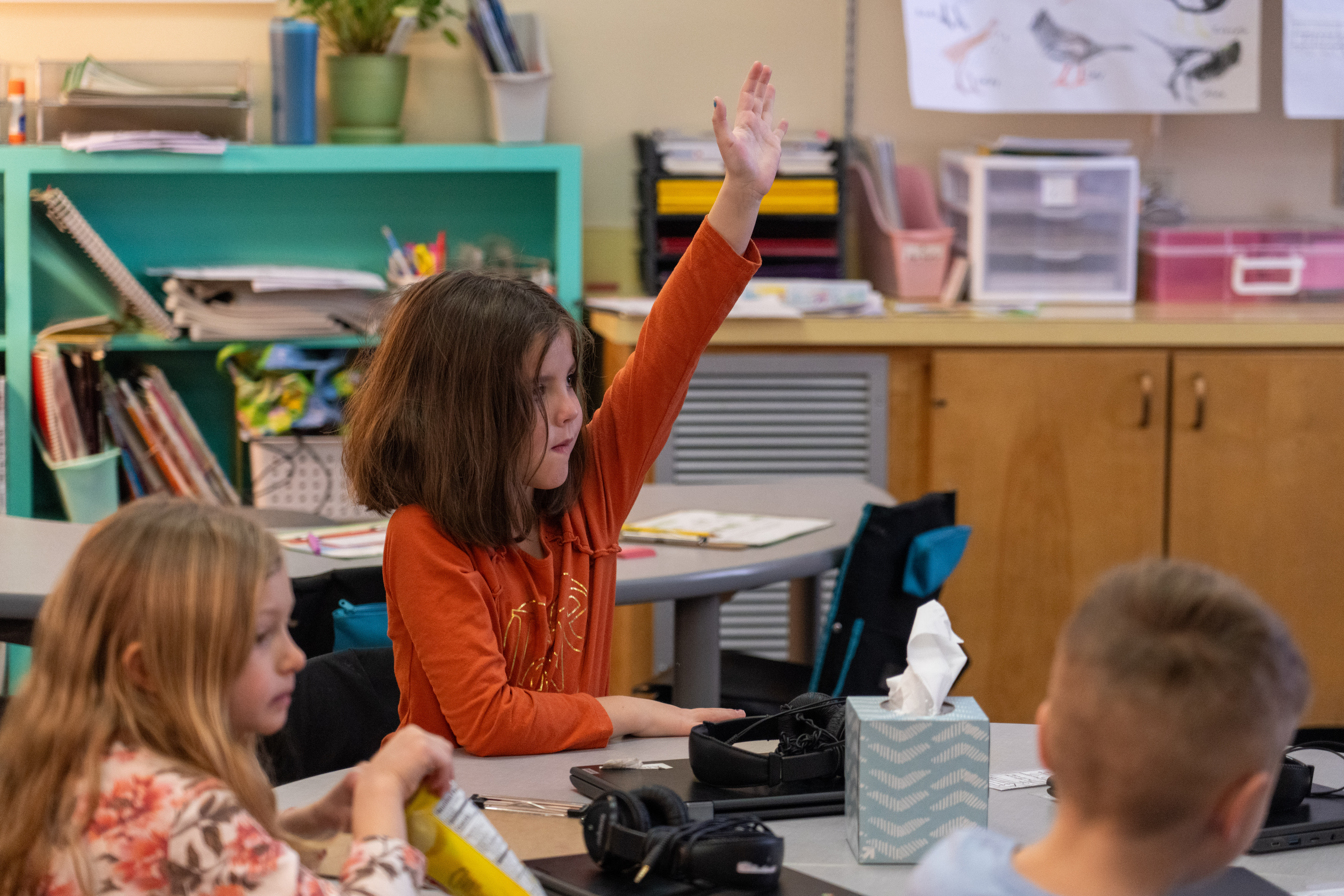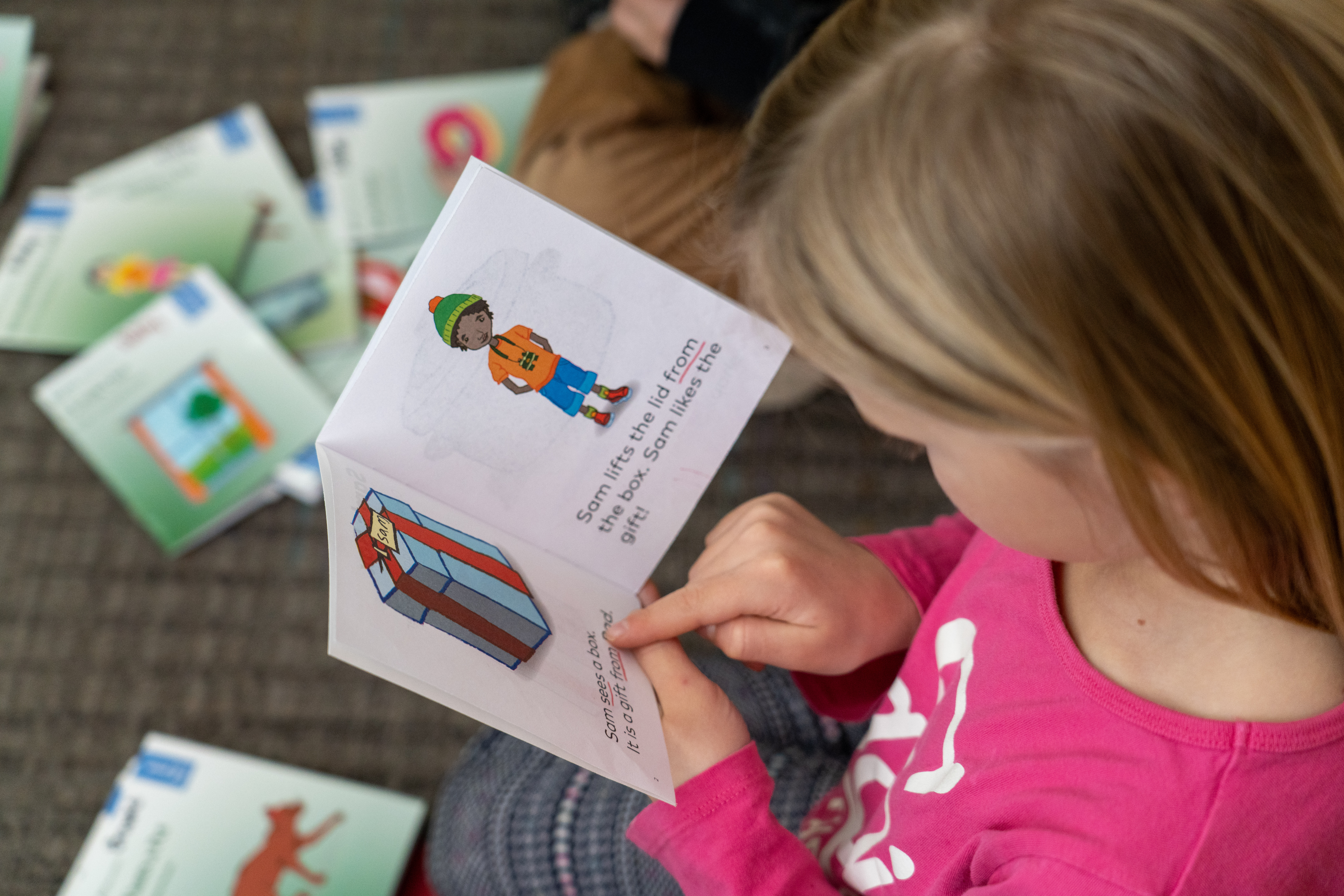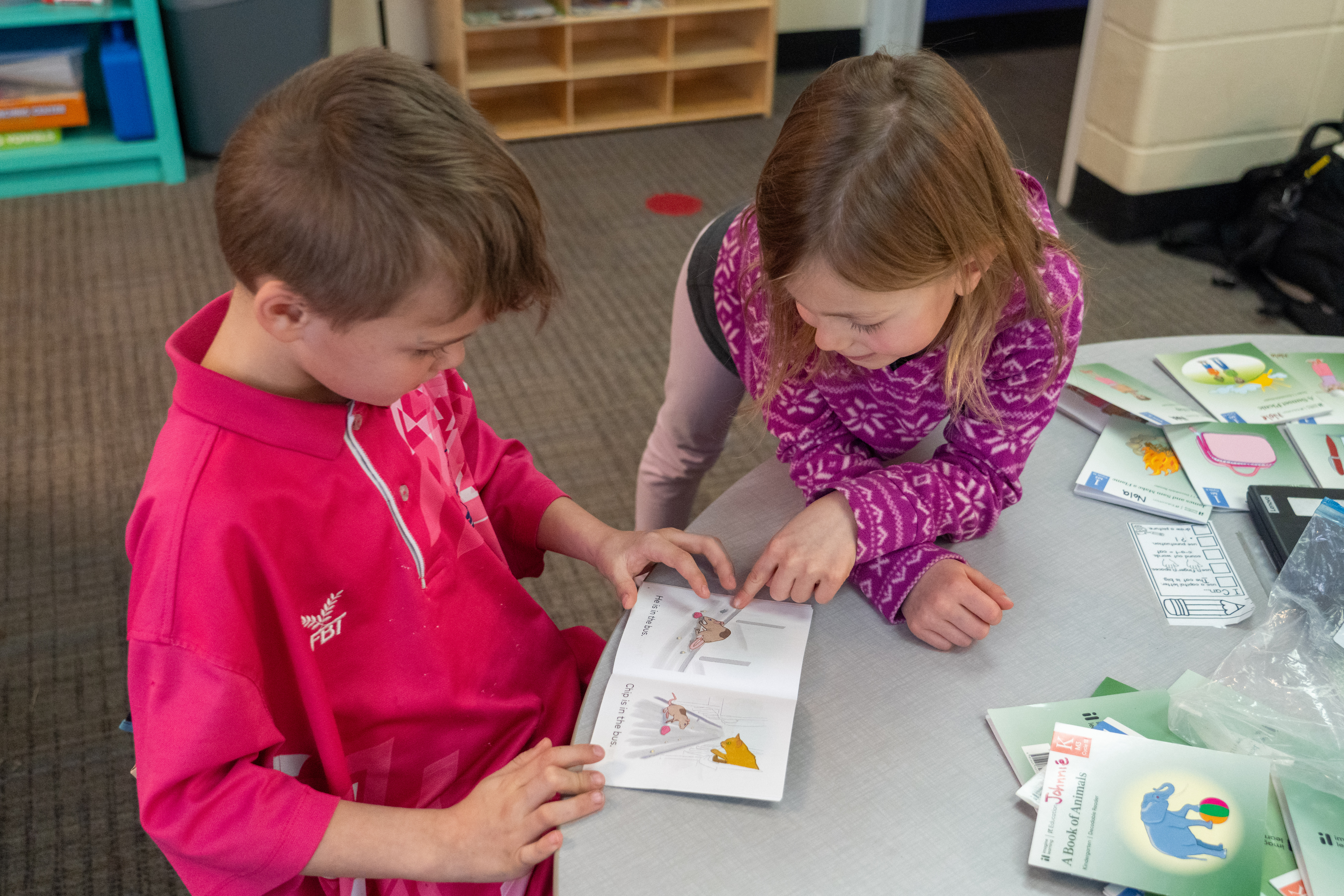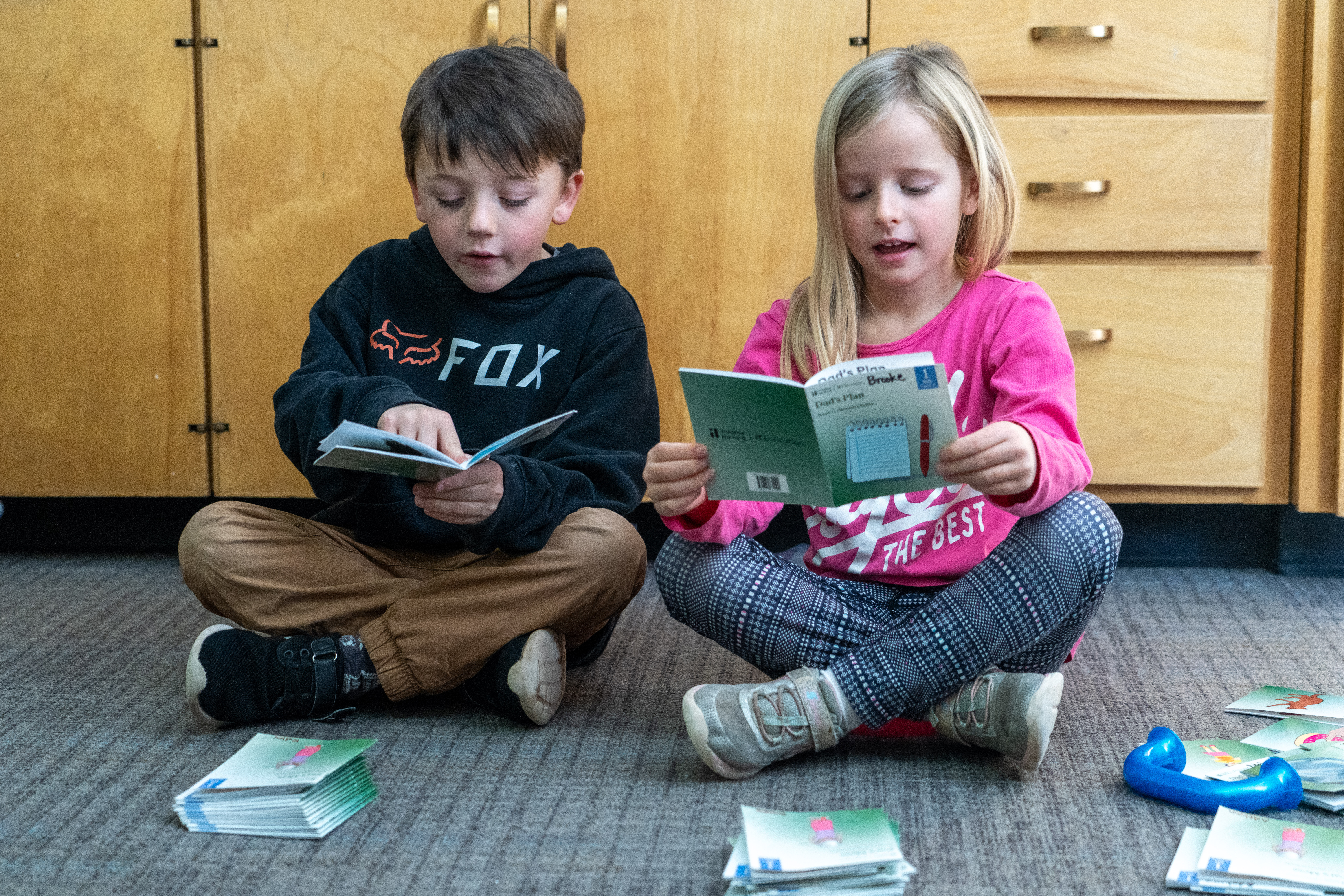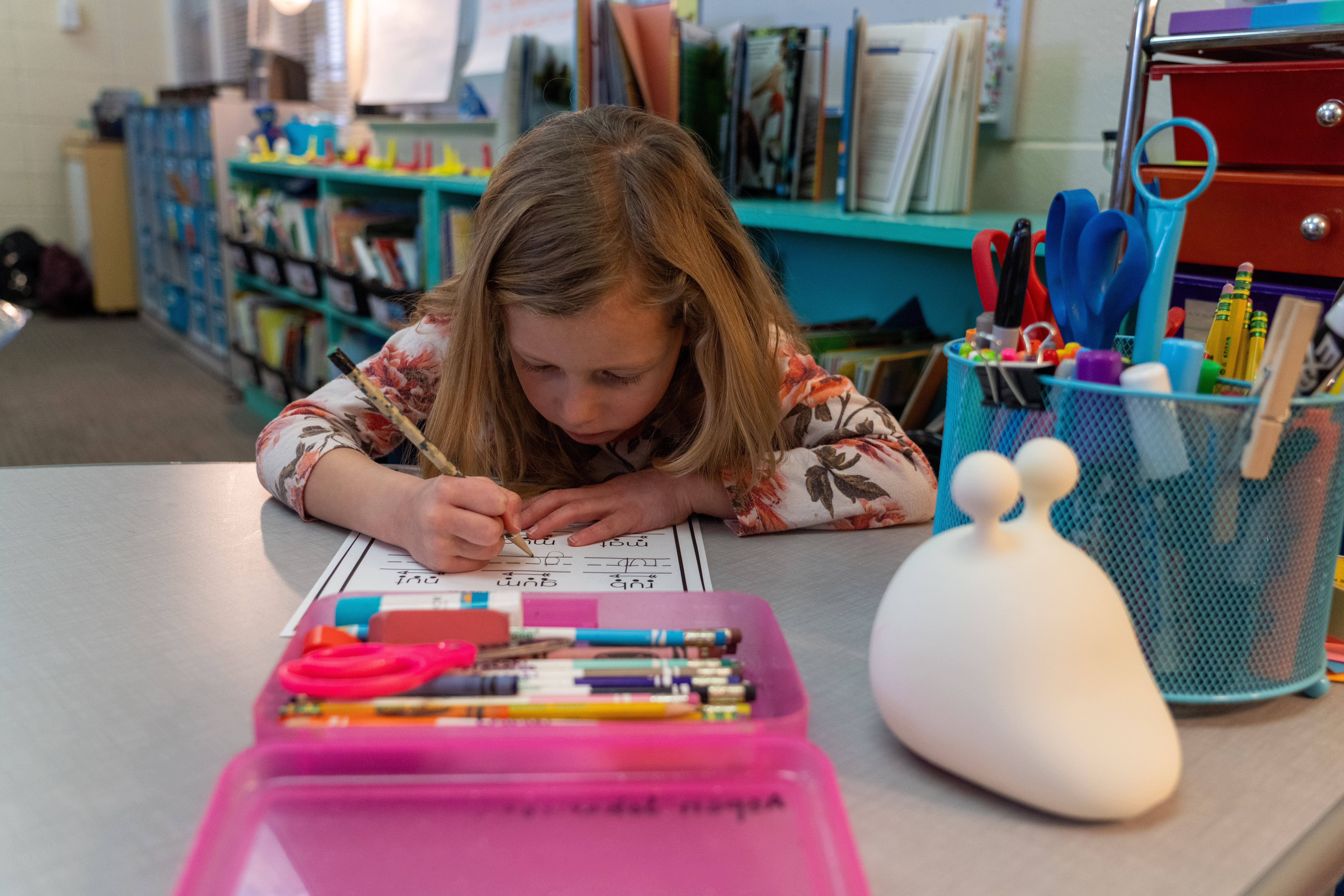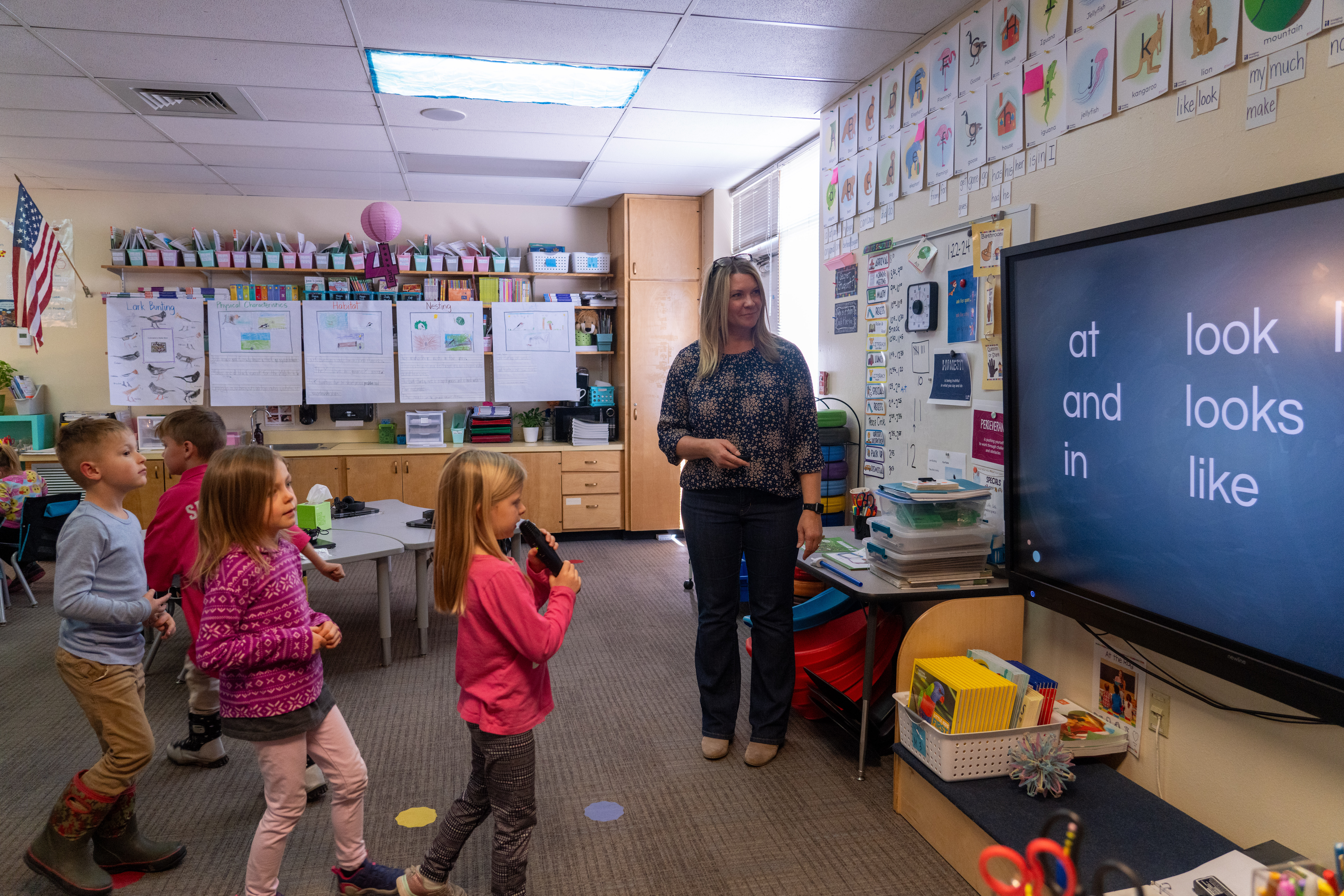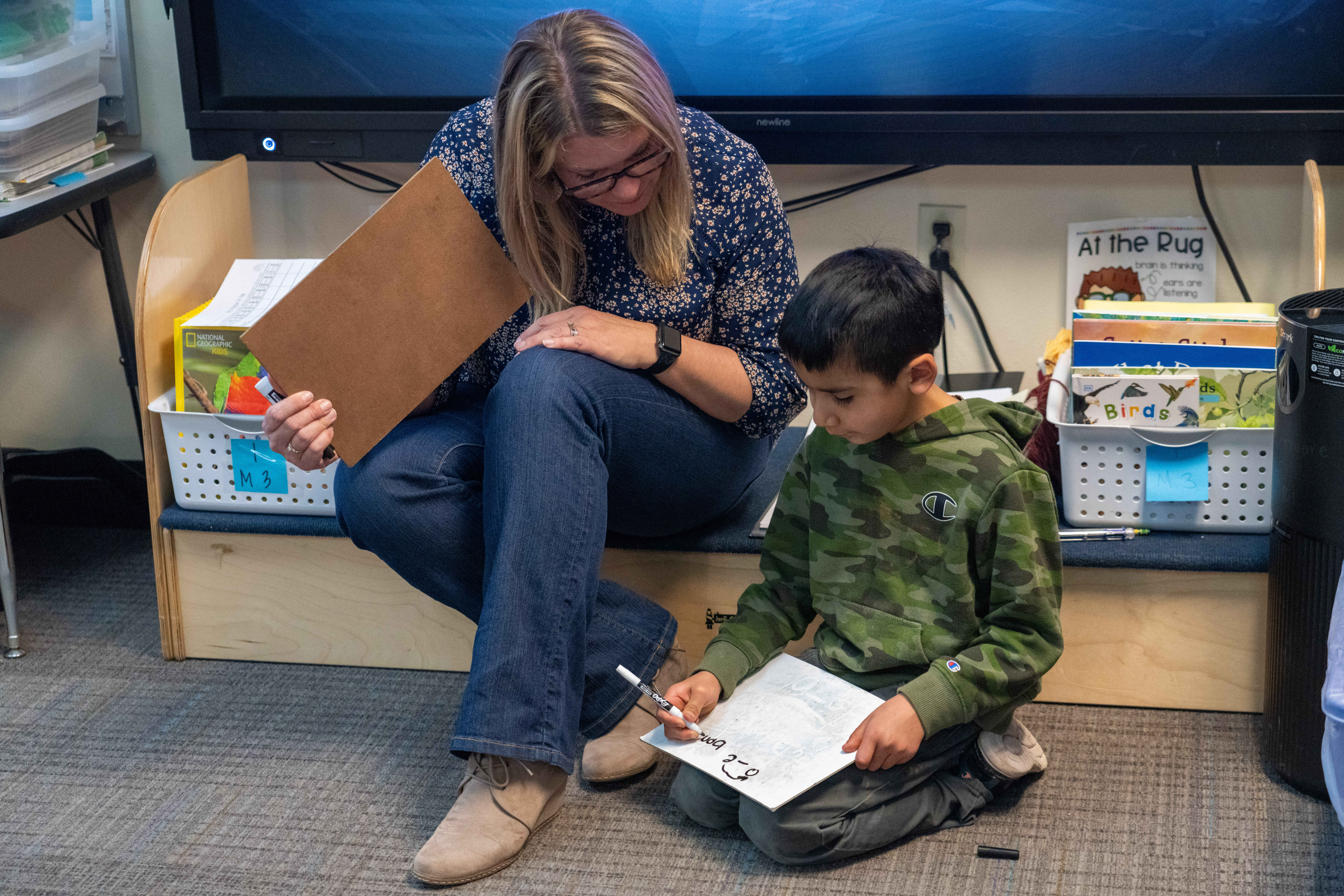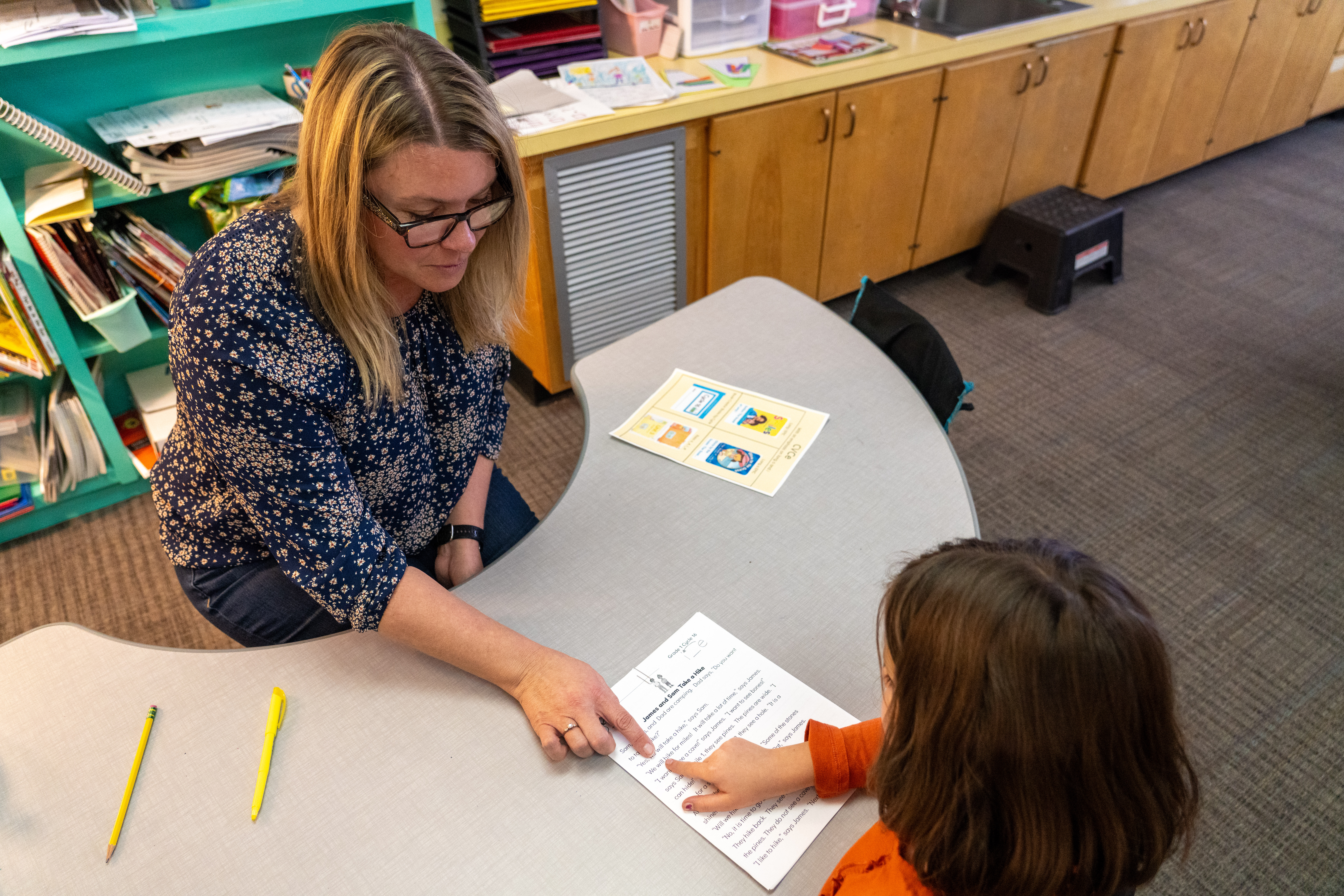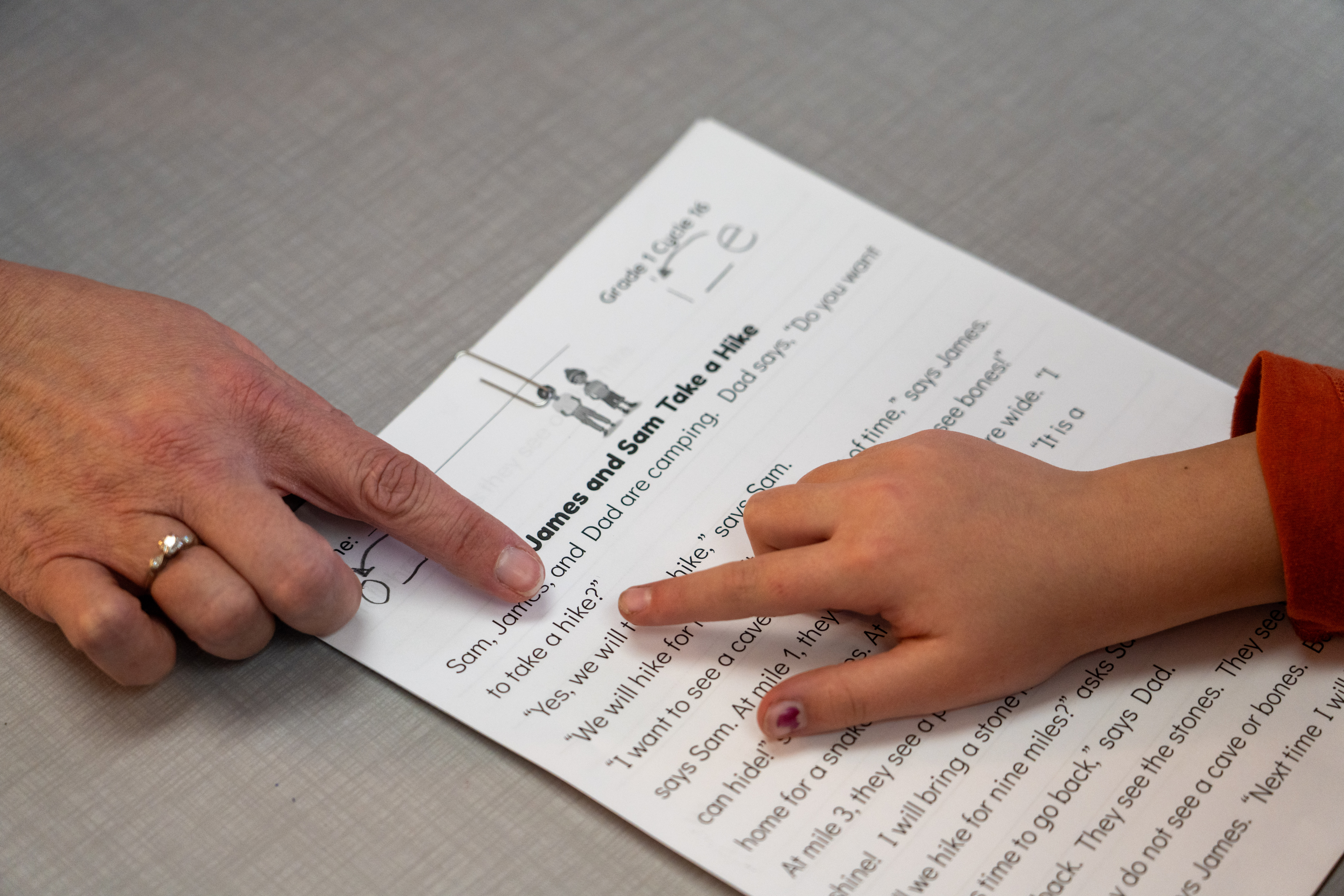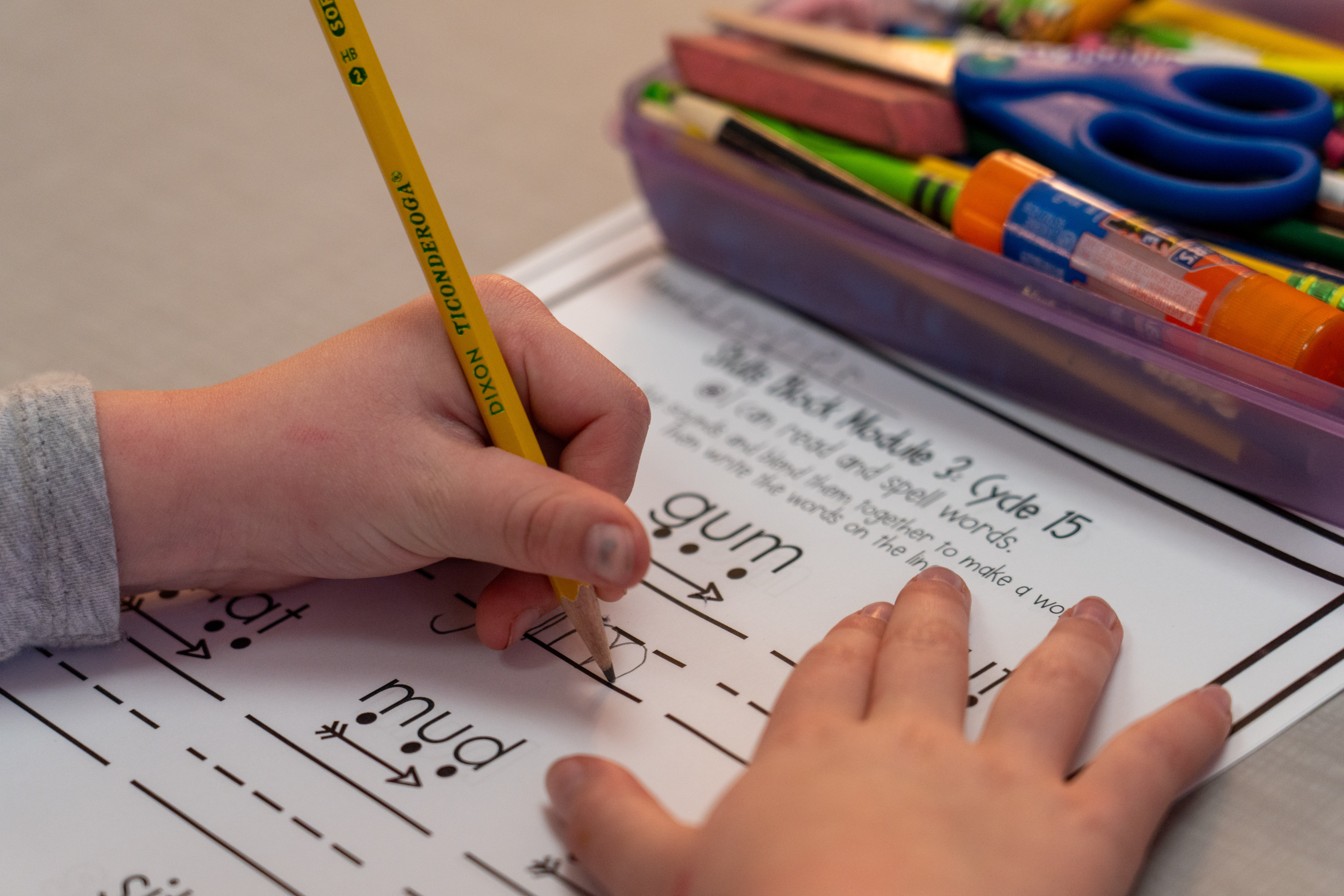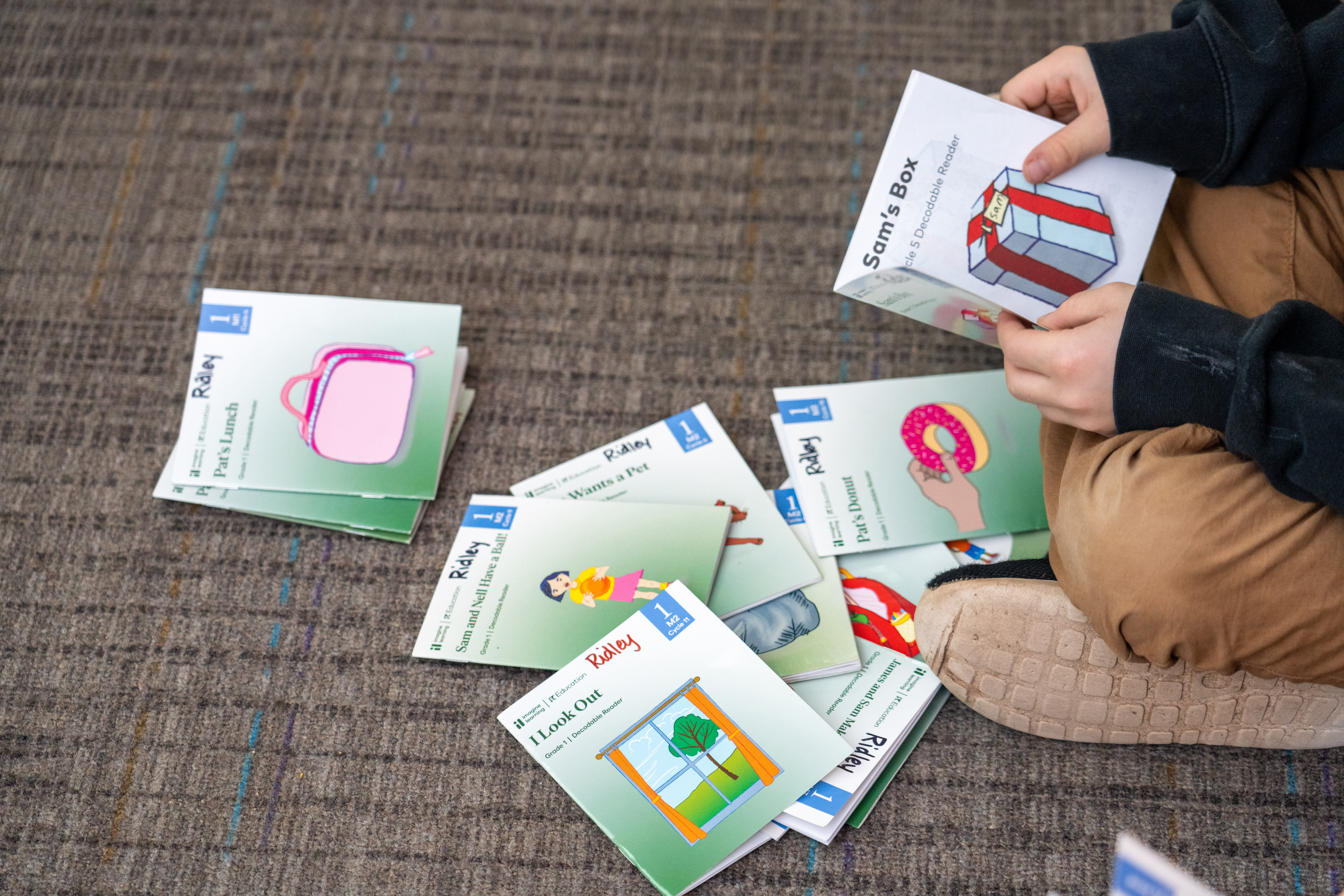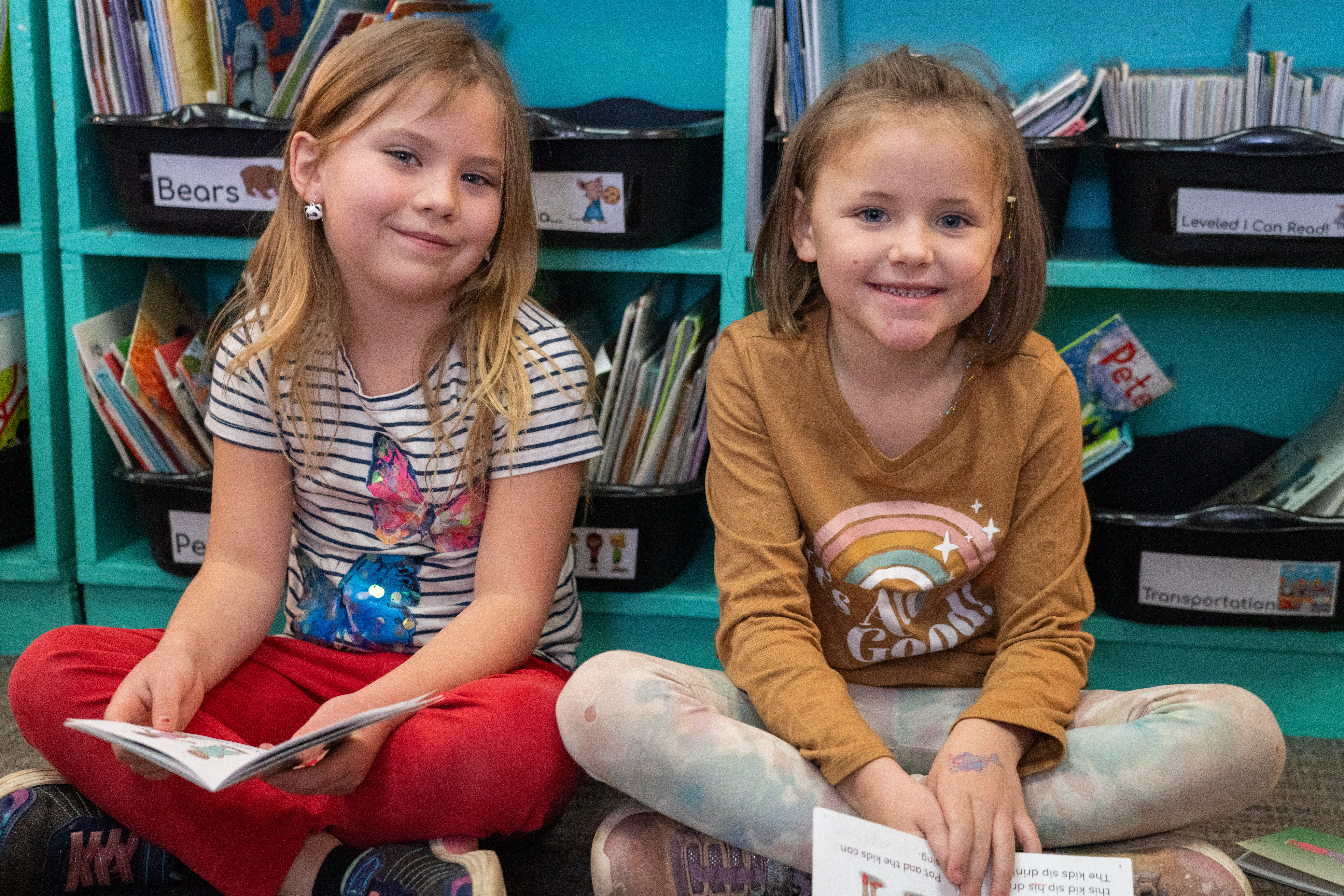Coming in from the playground at Poudre School District’s Livermore Elementary School, students in Kat Jayroe's kindergarten and first-grade classes leap into literacy.
Jayroe reads a chapter from a “Magic Treehouse” novel to help shift students from one activity to the next. After excitedly answering questions about the story, they move into their literacy skills block, which focuses on the foundational skills needed to learn how to read.
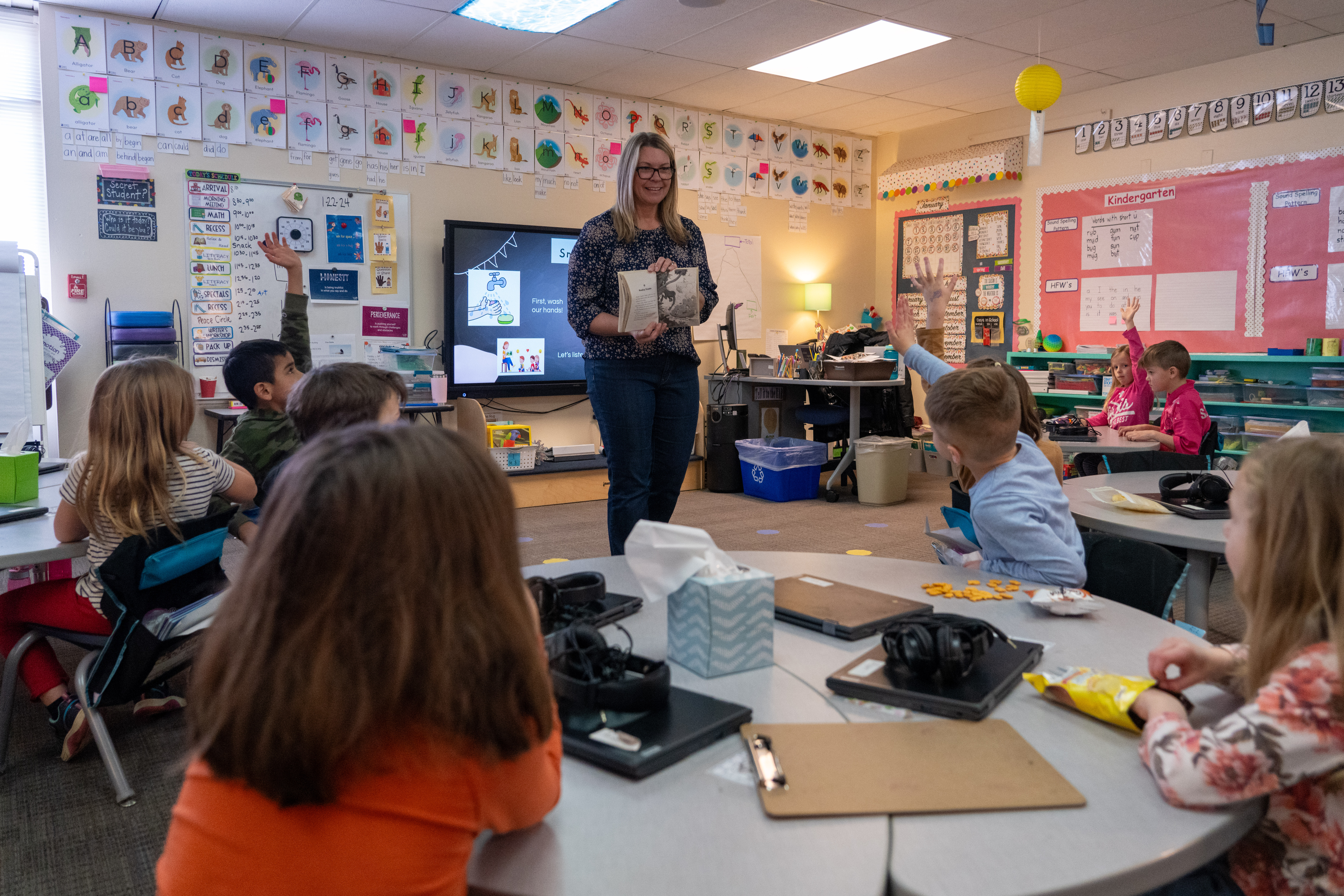
During instruction together as a class, students are taught at their grade level how to read new words they will see frequently and practice a sequential pattern of words with similar sounds called sound spelling patterns. Afterward, there are many opportunities to practice these skills.
While working independently, students can read their decodables — books that help them practice skills like phonemic awareness, phonics and comprehension.
This new curriculum follows the science of reading and helps students become fluent readers and writers.
"My favorite part about class is learning new words," said Brooke, a first grader, after finishing her work in class.
To apply these word recognition literacy skills in other subjects, students shift into their module block after lunch, which pulls together language comprehension skills such as writing and reading with social studies and science content.
This is what a day generally looks like in PSD with the new elementary literacy curriculum.
Literacy - a foundation for learning
Literacy is the key to building knowledge and engaging with the world. Adopted in spring of 2023, the new curriculum materials are intended to ensure every student has the foundational and critical literacy skills needed for academic and lifetime success. A big step toward that goal was equipping every elementary teacher with scientific and evidence-based materials to support their literacy instruction.
Most elementary schools in PSD began using Imagine Learning EL Education K-5 this school year. To support their different needs, Core Knowledge schools use Amplify Core Knowledge Language Arts (CKLA) and dual language schools continue to use McGraw-Hill Wonders and Maravillas as English-Spanish companion programs.
All of these are rich knowledge-building curricula that intertwine learning to read and write with deep exploration of content.
About the elementary literacy curriculum materials in PSD
These materials are on the Colorado Department of Education's Advisory List of Instructional Programming and are highly rated by EdReports, a nonprofit designed to improve K-12 education through reviewing and identifying high-quality instructional materials.
Imagine Learning EL Education K-5
- This curriculum is for all schools other than Bethke, Harris, Irish, O'Dea, Traut, and Zach elementary schools.
- Includes hands-on activities.
- Designed by teachers.
- Aligns with Next Generation Life Science Standards and Colorado Academic Standards, which allows teachers to get more science in the curriculum as they build background knowledge. This addresses some of the science standards but is not intended to be a replacement for that curriculum.
Amplify Core Knowledge Language Arts (CKLA)
- This curriculum is for PSD's Core Knowledge Schools, Bethke, O’Dea, Traut, and Zach.
- Follows the Core Sequence from the Core Knowledge Foundation.
- Maintains integrity to the Core Knowledge curriculum.
- These schools will collaborate to become more standardized in their delivery of literacy in the Core Knowledge model.
McGraw-Hill Wonders and Maravillas
- This curriculum is for the dual language elementary schools, Harris and Irish.
- Dual language schools use the English and Spanish companion programs to allow schools to teach in both languages.
- These materials were part of the previous adoption. Re-implementation of these materials will include an evaluation of the current adoption, with potential future adjustments if necessary.
Teaching and going more in depth with literacy skills
Having been at the PSD Mountain Schools for almost two decades, Jayroe is not a stranger to teaching literacy.
Throughout her time as an educator, Jayroe says that the foundational aspects of this work remain relatively the same; sound spelling patterns, for example, haven’t changed. So, what is the difference?
“We are just using it better,” Jayroe said of the curriculum. Teachers are going more in depth; they’re following the science of reading and connecting literacy skills with the texts that students are learning to read and comprehend.
As an example, her students became avian researchers. They dove deep into vocabulary and comprehension while reading rich texts about different species of birds and writing about their habitats and diets. Her students get excited about what they’re learning, she says, and at a critical time in their academic lives.
"A strong foundation in literacy not only enables students to comprehend and analyze information but also empowers them to express their thoughts effectively," said Jayroe. "With that said, I believe that this new literacy curriculum helps build on all of that."
Implementing a new curriculum in a school district this size is challenging; yet, it has established a new level of consistency across PSD’s elementary schools. Teachers can share best practices and learn from one another, and student experiences are similar from school to school.
Parents notice curriculum's impact on learning
Although these curriculum materials haven’t been used long, some parents are already noticing the positive impact on their student’s learning.
Holly Hotle, a parent of two students at Johnson Elementary School, has heard from others that their children are learning and reading more efficiently than their older siblings did before. Her children are finding similar success. Hotle’s son has ADHD. They were initially concerned that he would have trouble learning to read at the same pace as his classmates but are delighted to see him excel and help his younger sister out.
"Both my kindergartener and second grader are reading by their own prompting and are excited to learn new words and sound words out," said Hotle. "I’ve been in awe watching how fluidly they have picked up reading, and I do attribute some of this excitement to a phenomenal literacy curriculum focused on the science of reading."
Halfway through the first school year using this curriculum, teachers and families have made initial observations about the changes and improvements with students. However, the question remains: What data will show the long-term value and effectiveness of this curriculum?
Data to determine curriculum effectiveness
It may seem obvious, but the use of a new curriculum can only be effective if used as intended. It will take time to determine its effectiveness, for sure, but PSD is monitoring short- and long-term data along the way, Curriculum and Instruction Director John Passantino said in an April 2023 presentation to the PSD Board of Education. Some of those include:
- READ Act assessments happen three times a year for students in grades K-3. These measure the development and application of phonemic awareness and phonics skills necessary for students to become skilled readers. This will be a leading indicator for evaluation.
- Longer term, data will come from NWEA Measures of Academic Progress (MAP), Colorado Measures of Academic Success (CMAS), and other literacy assessments. These tests will show the overall transferability of these skills, which is incredibly important since students read, write, and communicate in all subjects — nearly everything connects back to having a strong foundation in literacy.
Before finishing his April presentation, Passantino highlighted that it is one thing for students to pass literacy tests but another thing entirely for them to read and apply background knowledge in other subjects or real-life situations. Test results will show how this new curriculum affects elementary student achievement in all areas across each subject.
"I really do believe if we do this well, this will drive that change," he said. "It will take years, in some cases, to see those effects, but it will set a solid foundation for kids for future success."



